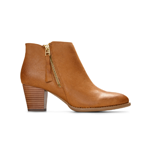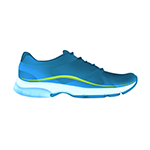
Comprehensive Tips to Prevent Foot Calluses

Time for a little science trivia: What’s the largest organ in the body?
If you guessed the skin, you’re right. While the heart powers the ship and the brain steers it, the skin is responsible for safeguarding the whole system. Interestingly, the area that needs the most protection is the soles of the feet—that’s why the skin is thickest there.
But sometimes, even the toughest skin can’t take the pressure, and when a single area receives repeated pressure or repetitive chafing, the epidermis forms tough, hard skin called a callus.
If you spend long hours on your feet and you’ve noticed these patches of thickened skin popping up on your heels or soles, you’re probably wondering how to handle them.
Look no further than these comprehensive tips on how to prevent foot calluses.
How to Keep Your Feet Callus-Free
A painful callus is our skin’s response to repeated friction. If we didn’t form foot calluses, the friction would wear through our epidermis and damage the tissue beneath.
If you’re noticing calluses on your feet, that means something’s scraping them as you move. So, wondering how to prevent calluses on feet that have to stay active all day?
Here are the top 5 ways.
#1 Follow a Foot Care Routine
Even though they’re crucial to our lives, our feet don’t often get the attention they deserve. While you probably follow a facial care routine and brush your teeth twice a day, many of us expect the feet to take care of themselves.
However, the better you treat your feet, the better they’ll treat you.
Following a daily foot care routine is an excellent way to achieve healthy and callus-free soles. Here are a few foot care tips you can easily incorporate into your daily life:
- Wash your feet – Immerse them in warm, soapy water and rinse the dirt away.
- Exfoliate – After washing, exfoliate to clear your pores.
- Dry feet completely – Lingering moisture can lead to foot fungus and other issues.
- Apply moisturizer – A soothing lotion can help rejuvenate the skin.
Sticking to this regimen can help fortify your feet against repeated friction. And if you really want to treat your feet, gift them a luxurious soak in a mixture of warm water, lemon juice, and Epsom salt once per week.
#2 Choose Quality Footwear
Once you’ve established healthy foot care habits, the next step to staying callus-free is to take a good, hard look at your shoes.
Footwear is often the main culprit when it comes to calluses. That’s because when your shoes don’t fit properly, they can:
- Squeeze your feet – Tight footwear puts excessive pressure on your skin and leads to friction (and calluses).
- Shackle your toes – Toes need their space. If they’re cramped, they spend their days rubbing against one another and the bottom of your shoe.
- Leave your feet swimming – Oversized footwear is also an issue. When given too much room, your feet will drift around.
To keep calluses at bay, go with footwear that:
- Offers ample toe room – Toes shouldn’t be packed like sardines. Choose shoes with a wide-toe box to keep them snug but not smashed.
- Features springy material – With footwear, a little give is a good thing. When shoe material is stiff as a brick, it can’t help but scrape your skin.
- Relieves pressure – When your shoe soles are pliable and supportive, they soak up a lot of the pressure of a day spent on foot.
- Breathes with your feet – Stewing in sweat all day softens the skin and invites callusing. Breathable footwear wicks away heat and moisture for cool, dry soles.
Need footwear for calluses that are stylish yet supportive? For active days out, the Vionic Walk Max Lace Up Sneaker checks all the boxes. It’s equipped with rebound sole support technology and is available in a variety of widths.
When it’s time to kick back, the Vionic Activate Recovery Sandal or Rejuvenate Recovery Sandal stand ready to soothe a set of over-walked heels and toes. They’re stable (so no slippage) yet flexible enough to take the edge off any friction that might pop up.
#3 Wear Proper Socks
Even the finest shoes need a little help to keep your feet in tip-top shape. That’s where quality socks come in. And the right socks aren’t necessarily the most pricey pair—comfort and support come first.
When hunting for socks, you should always:
- Try before you buy — You definitely want to make sure your socks fit perfectly—that means no bunching up or drooping down.
- Pick the proper size – When you try on a prospective pair, make sure your toes reach the tip, and the heel support rests in the right spot.
- Prioritize high thread count – Denser fabric wicks away moisture and offers spongy support.
- Choose fortified heels and toes – In areas where calluses tend to form, you want a little extra cushion to prevent this foot problem from worsening.
High-quality, well-fitted shoes are your main line of defense against calluses. However, socks are a close second. Low-end socks in the wrong size can cause calluses even if you’re riding with the perfect pair of sneakers, so don’t skip proper sock shopping.
#4 Keep Feet Hydrated
When your skin is soft and hydrated, it packs a lot more flexibility than when it’s dry and cracked. With proper foot care, this will help neutralize the daily wear and tear of slow down callus formation.
If you’ve been wondering how to avoid calluses on feet that take a lot of heat, supplemental hydration is your friend.
A daily foot care regimen using a standard moisturizer may work fine for most, but a nourishing lotion formulated specifically for feet will really callus-proof your soles.
Once you’ve picked out a solid, foot-friendly option, get in the habit of applying it just before bed so your feet can luxuriate in the hydrating formula overnight. Once the moisturizer has fully soaked in, add a splash of petroleum jelly to lock in the hydration.
#5 Get Your Feet in Shape
Because calluses form under pressure, taking the pressure off your feet is a fantastic way to fight thickened skin. If certain portions of your feet are tight or strained, you may unconsciously favor these areas and place excessive pressure on other parts of your foot, such as the heel. Over time, off-loading impact like this can trigger an unwanted reaction: calluses.
The solution? Get your muscles and tendons loose, flexible, and ready to do their job by doing foot exercises regularly. Not only will this help ward off calluses and corns, but it’ll also help prevent general soreness after a long day on the go.
There are a few different exercises you can perform to promote foot flexibility:
- Self-massage – Gently compress the sole of your foot between your thumbs, starting at the heel and working toward the toes. Spend about five minutes on this, then grip the tops of your toes and bend them lightly upward to stretch the plantar fascia.
- Scrunches – An excellent warmup before getting active: Stand on a bath towel and curl your toes enough to slightly lift the towel. Release and repeat. This exercise activates the linking muscles between your heels and toes.
- Heel-toe raises – Perform this exercise seated, with your feet resting comfortably on the floor. Keep your toes flat and raise your heel until only your toes and the balls of your feet make contact with the floor. Then, drop your heels and lift your toes skyward.
If you happen to live near the beach (or an outdoor volleyball court), sand-walking is also terrific foot fuel. The resistance stretches your tendons and calves and leaves your feet feeling loose and primed for action.
When is it Time for Professional Help?
While committing to a regular foot care routine and choosing high-quality shoes and socks should put an end to callus formation for most people, there are situations where medical attention is the best fit.
If you’ve been suffering from persistent calluses, and any of the following apply to you, seek out the help of a podiatrist (a trained foot specialist):
- Diabetes or neuropathy – These ailments affect your body chemistry and make it tough for calluses to mend on their own.
- Redness and swelling – If you notice your calluses getting inflamed, swelling up, or emitting any sort of discharge, that’s your cue to get them checked out.
- Recurring calluses – If you have quality footwear and practice healthy foot hygiene, yet the calluses just keep coming, an underlying issue may be to blame.
Go Callus-Free, With Vionic
Now that you know how to stop calluses on your feet, you can start expanding your shoe wardrobe with help from Vionic. We offer a roster of expertly calibrated footwear designed for a callus-proof foundation. Discover stylish arch support for the office, bouncy sneakers for non-stop action, and cozy, end-of-day options like the Gemma II Mule Slippers and Relax II Slippers.
Plus, all our footwear features built-in podiatrist-approved orthotics, so expect endless arch support no matter how long you’re on the go.
Feet are life’s foundation—treat them right with Vionic.
Sources:
Better Health Channel. Skin explained. https://www.betterhealth.vic.gov.au/health/conditionsandtreatments/skin#:~:text=The%20skin%20is%20the%20largest%20organ%20of,tough%20enough%20to%20resist%20breaking%20or%20tearing.
National Library of Medicine. Anatomy, Skin (Integument), Epidermis. https://www.ncbi.nlm.nih.gov/books/NBK470464/#:~:text=Skin%20thickness%20varies%20by%20body,cosmesis%20are%20significant%20surgical%20concerns.
Feet First Footcare Specialists. Podiatrist Recommended Foot Care Routine. https://www.feetfirst-footcare.com/blog/874834-podiatrist-recommended-foot-care-routine
Pedestrian Project. Podiatrist Tips On Caring For Calluses. https://pedestrianproject.com/blogs/foot-knowledge/podiatrist-tips-on-caring-for-calluses?srsltid=AfmBOoqe56fv9YNcYquxy-ndNrwLUV7Xy0rZksMvFE_A0OPYU9vBWlMW
Fixing Feet Institute. 5 Tips to Fight Dry, Cracked Feet. https://www.fixingfeet.com/blog/5-tips-to-fight-dry-cracked-feet.cfm#:~:text=Soak%20in%20Socks%20Overnight&text=Before%20going%20to%20bed%2C%20apply,socks%20and%20wear%20them%20overnight!
Runner’s World. How to Prevent and Treat Calluses (And Other Common Feet Problems). https://www.runnersworld.com/health-injuries/a34161026/preventing-calluses-from-running/
Healthline. 9 Foot Exercises to Try at Home. https://www.healthline.com/health/fitness-exercise/foot-exercises#toe-raise-point-and-curl
Fixing Feet Institute. When Do Corns and Calluses Need a Doctor? https://www.fixingfeet.com/blog/when-do-corns-and-calluses-need-a-doctor-.cfm#:~:text=If%20they%20are%20painful%2C%20it,them%20checked%20by%20our%20doctors.









